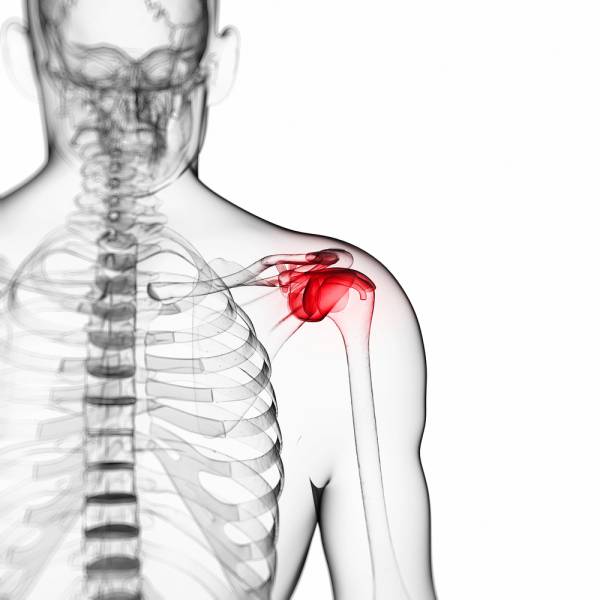As a CrossFit trainer and physical therapist, I see my fair share of shoulder injuries. I am placed in a precarious position. I want to see my athletes succeed and get new personal records on their lifts or benchmark workouts, and in the back of my mind I want to keep them safe.
I often have someone in our gym come up to me at the end of a WOD asking advice about an ache, pain, or nag. In the last several months, it’s always been about the shoulder. “Hey Doc, I have this thing on the front of my shoulder that hurts with toes to bar.” “Hey Coach, should I do toes to bar?” “Hey Coach, why does my shoulder hurt with kipping pull ups?”
In the two years I’ve been coaching and CrossFitting, I’ve seen biceps tendonitis, rotator cuff tears, and labral tears. These injuries are not always mutually exclusive. The structures are housed closely together and dysfunction in one affects function in the other.
The biceps tendon courses through the subacromial space. This is an area made up of the head of the humerus (upper arm bone) and the acromial process of the scapula (shoulder blade).
There are four muscles that make up the rotator cuff: supraspinatus, infraspinatus, teres minor, and subscapularis. The supraspinatus courses through the subacromial space along with the biceps tendon and the subacromial bursa.
If the thoracic spine doesn’t have good mobility, the scapula then cannot be in correct mechanical position. Often, the scapula tilts forward, thereby closing down the subacromial space, creating impingement. This impingement causes the biceps tendon, supraspinatus tendon, and subacromial bursa to be inflamed. Add overhead motion to it, like push press or a kipping movement, and you’ve got yourself one pissed off shoulder joint.
The labrum is not forgotten in this dance of shoulder movement and mobility. It is the site of attachment of the long head of the biceps tendon. Often injured in overhead throwing athletes, the labrum’s purpose is to provide additional stability to the shoulder joint, with the assistance from the rotator cuff muscles. When the cuff is weak, the biceps tendon and labrum will take up the slack, attempting to provide additional stability. When the rotator cuff is already weak, and then gets fatigued with a kipping movement, the labrum takes over. Because of it’s low tensile strength, something has to give. If the rotator cuff doesn’t, the labrum will.
So, there are multiple reasons why you keep f’ing up your shoulder. The first steps toward rehabilitation are rest from the aggravating movement and re-evaluating your form. If you have a good CrossFit coach, talk to him or her about your form, and ask to be watched in a workout. Many of my athletes look technically sound during technique practice, but then it all goes to crap when the WOD is on and shit hits the fan.
 Mobility exercises that you might find on mobilityWOD are the next step. K-Starr, also a physical therapist and CrossFit box owner, knows his stuff. When rest and mobility don’t work, it’s time to see someone smarter than you. In most states, you can see a physical therapist without a referral from a physician. A good physical therapist will listen to your method of injury, aggravating and alleviating factors, and perform an exam to determine what the exact pain-takeads-platform-verification in the shoulder may be.
Mobility exercises that you might find on mobilityWOD are the next step. K-Starr, also a physical therapist and CrossFit box owner, knows his stuff. When rest and mobility don’t work, it’s time to see someone smarter than you. In most states, you can see a physical therapist without a referral from a physician. A good physical therapist will listen to your method of injury, aggravating and alleviating factors, and perform an exam to determine what the exact pain-takeads-platform-verification in the shoulder may be.
With a personal approach to corrective strategies, you’ll find the movements that used to hurt don’t anymore. In fact, they might even be easier. By correcting your mechanics and teaching your body how to move more efficiently, you’ll quit f’ing up your shoulder and start f’ing up WODs.
Shoulder joint diagram courtesy of NIAMS [Public domain], via Wikimedia Commons.
Photo 2 courtesy of Shutterstock.






